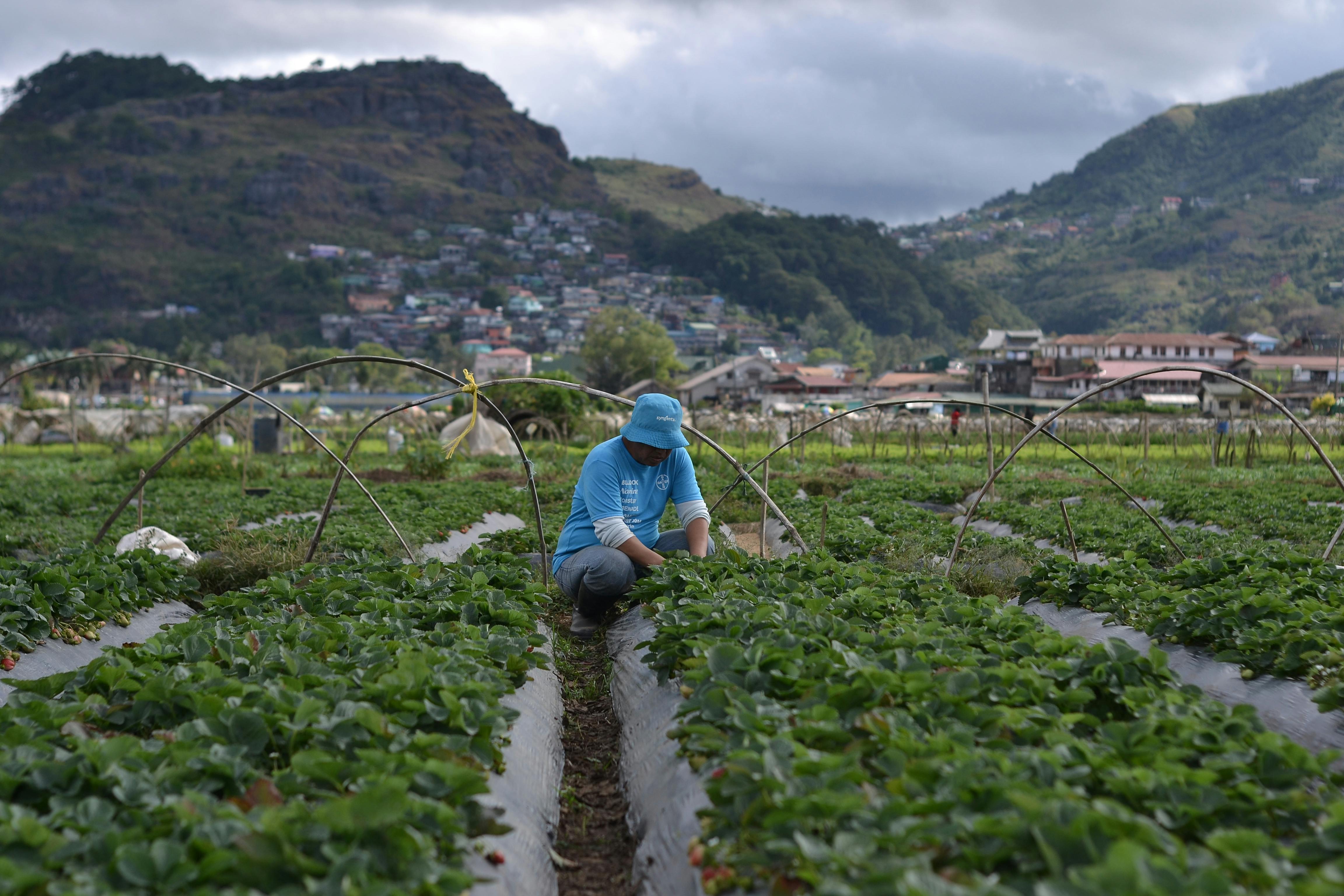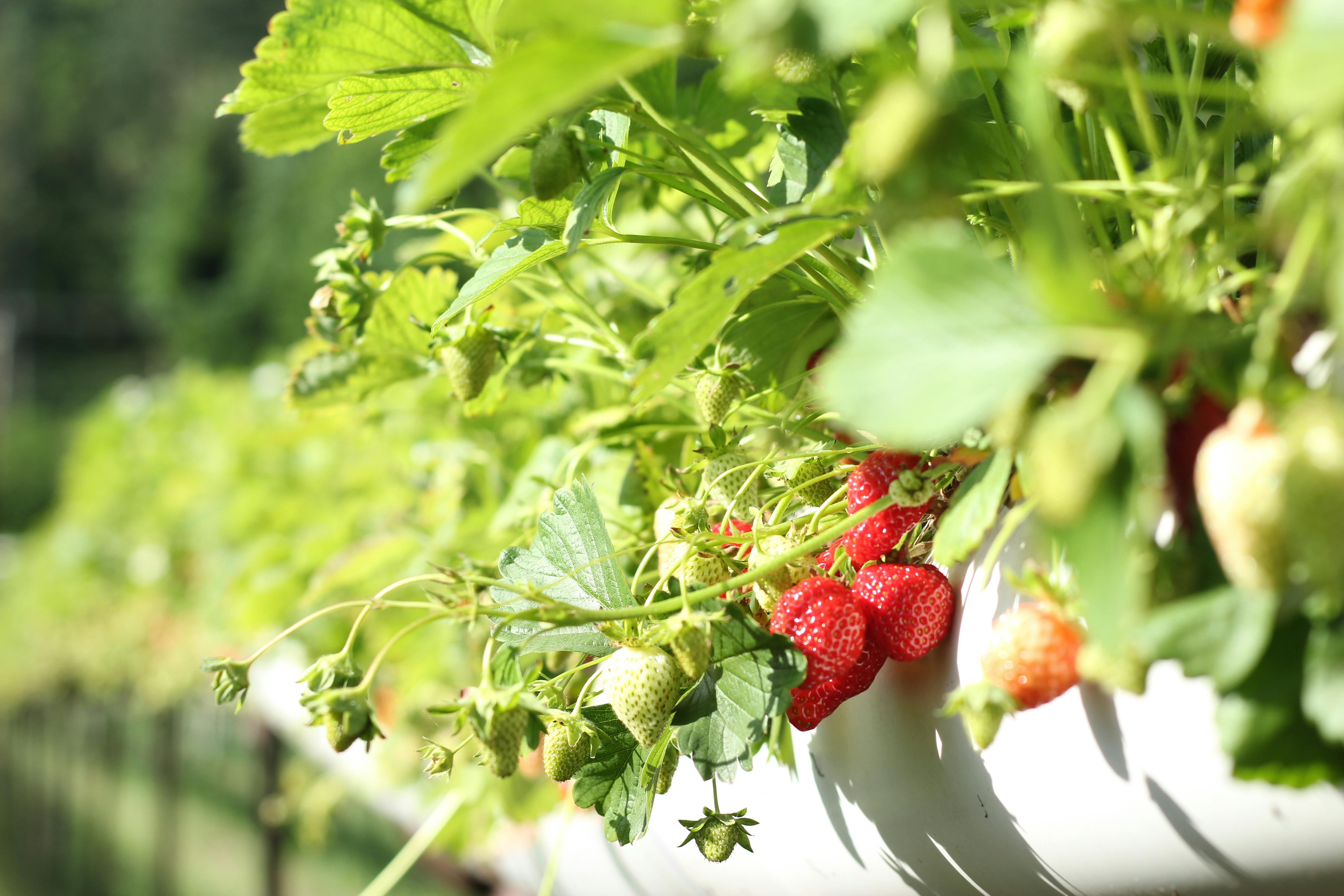Strawberry plants are extremely sensitive to temperature changes and can easily be killed if temperatures become too extreme. Knowing what temperature will kill your strawberry plants is essential for successful strawberry gardening. In this article, we will discuss the temperatures that can kill strawberry plants, as well as ways to protect them from the cold.Strawberry plants are best grown in temperatures between 45-85°F (7-30°C). Temperatures below 32°F (0°C) or above 90°F (32°C) can cause damage to the foliage and fruit production.
What Temperature Can Cause Death of Strawberry Plants?
Strawberry plants are not very tolerant of cold and can suffer severe damage and even death when temperatures drop below freezing. The ideal temperature range for growing strawberries is between 50 and 85°F (10-29°C). Temperatures that fall outside of this range can result in the plant’s death. Low temperatures can cause the plant to become dormant, while high temperatures can cause it to wilt and die.
Cold temperatures below 32°F (0°C) can cause significant damage to strawberry plants. The most common symptom of cold injury is leaf scorch, which is caused by ice crystals forming in the leaves and damaging the cells. This leads to browning, wilting, and yellowing of leaves. If temperatures drop below 20°F (-7°C), it is likely that the plant will die. In some cases, temperatures as low as 15°F (-9°C) can cause death.
High temperatures above 90°F (32°C) can also cause significant damage to strawberry plants. Heat stress often causes the leaves to become dry, brittle, and yellowed due to excessive transpiration from the plant’s leaves. If left unchecked, this heat stress can lead to wilting and eventually death of the plant if temperatures exceed 95°F (35°C).
Temperature Requirements for Growing Strawberry Plants
Strawberry plants require a specific temperature range in order to produce the best fruit. For optimal growth and fruiting, strawberry plants should be grown in temperatures between 40-85°F (4-29°C). Temperatures outside this range can cause stunted growth, decreased yields, and can even kill the plants. If temperatures dip below 40°F (4°C) for extended periods of time, frost protection may be necessary. Conversely, if temperatures climb above 85°F (29°C) for extended periods of time, shade may be necessary in order to keep the plants from getting too hot.
It is also important to note that strawberries do not tolerate extreme fluctuations in temperature very well. Sudden temperature drops or increases can cause stress on the plants and can even stop flowering and fruiting altogether. Therefore, when growing strawberries it is important to make sure that the temperature remains relatively stable throughout the growing season.
How Much Heat Can Strawberry Plants Tolerate?
Strawberry plants are hardy and can tolerate a wide range of temperatures. However, they will perform best when nighttime temperatures stay between 40-55°F, and daytime temperatures stay between 65-75°F. When temperatures exceed 75-80°F during the day, strawberry plants may experience heat stress. High temperatures can cause the plants to go dormant, resulting in stunted growth and reduced yields. To help protect the plants from excessive heat, mulch can be used to keep the soil cool and moist. Additionally, providing shade and a steady supply of water can help prevent heat stress in strawberry plants.
When it comes to frost protection, strawberry plants are relatively cold hardy and can tolerate temperatures as low as 20°F when they’re dormant. Once the leaves begin to emerge in springtime, however, frost protection should be provided if temperatures drop below 32°F. Covering the strawberry beds with burlap or plastic sheeting on cold nights will help keep them safe from frost damage.
How Cold is Too Cold for Strawberry Plants?
Strawberry plants are quite hardy and can tolerate cold temperatures well. However, when the temperatures drop too low, the plants may suffer from frost damage and die. The optimal temperature range for strawberry plants is between 50-75°F (10-24°C). Temperatures below freezing can cause severe damage to the foliage and roots of the plant. In areas with cold winters, strawberry plants should be covered with straw or a frost blanket to provide insulation. In areas with milder winters, mulch is recommended to help protect the roots from frost.
When temperatures drop below freezing, it’s important to take steps to protect your strawberry plants from frost damage. If possible, move them indoors or cover them with a frost blanket or sheet of plastic. Additionally, adding an extra layer of mulch around the base of the plant will also help keep it warm during cold snaps. If you suspect that your strawberry plants have been damaged by frost, wait until spring before pruning any dead leaves or stems as they may still produce fruit in early summer.
It’s also important to note that cold temperatures are not the only thing that can affect your strawberry plants’ health and productivity; extreme heat can also cause problems. Temperatures above 85°F (29°C) can cause wilting and reduced yields. It’s best to plant strawberries in locations that offer some shade during midday when temperatures are at their hottest. Additionally, providing supplemental irrigation during periods of extreme heat will help keep your plants healthy and productive.
Overall, when it comes to keeping your strawberry plants healthy and productive in cold climates, it’s important to provide extra insulation during periods of extreme cold and shade during periods of extreme heat. Additionally, be sure to monitor soil moisture levels throughout the season as this can have an effect on plant health as well!

How Hot is Too Hot for Strawberry Plants?
Strawberry plants are one of the most popular fruits grown in home gardens across the world. They are a relatively easy plant to grow, however, they do require specific temperatures for optimum growth and fruit production. It is important to know how hot is too hot for strawberry plants so that your crop can thrive and produce the best harvest.
Generally speaking, strawberries prefer temperatures between 55-75°F (13-24°C). The ideal growing temperature for strawberries is 60-65°F (15-18°C). Temperatures below 55°F (13°C) or above 75°F (24°C) can have an adverse effect on strawberry plants.
When temperatures exceed 85°F (29°C), strawberry plants go into a state of dormancy and will not produce any fruit. This can be particularly troublesome in regions that experience high temperatures during the summer months when strawberries are typically in season. In these climates, it is best to plant early season varieties of strawberries that can tolerate warmer weather better than later season varieties.
In addition to higher temperatures, prolonged periods of extreme heat can cause wilting or death of strawberry plants. To help prevent this, gardeners should take steps to provide additional shade and moisture to their strawberry crop during periods of extreme heat. Mulching around the base of the plant helps retain moisture and keep root systems cool while providing some additional protection from the sun’s rays. Additionally, overhead irrigation or misting can help keep foliage cool during periods of excessive heat.
Impact of Climate on Growth and Survival of Strawberry Plant
Strawberry plants are one of the most popular fruits in the world, and they are grown in many different climates. However, it is important to understand how climate affects the growth and survival of strawberry plants. Temperature, humidity and other climatic factors all play a role in determining how well strawberry plants will grow and survive.
Temperature is a major factor that affects strawberry plant growth and survival. Too much heat can cause the plants to wilt and die, while too little heat can cause them to become stunted or not produce enough fruit. Strawberry plants require cool temperatures during the day for optimal growth, so if temperatures remain high for extended periods of time, it can negatively affect their growth.
Humidity also plays an important role in affecting the growth and survival of strawberry plants. Too much humidity can lead to fungal diseases such as grey mold, which can damage and even kill the plants. On the other hand, too little humidity can cause dehydration or water stress for the plants, making them more susceptible to drought-related damage.
Soil conditions are also essential for optimal growth and survival of strawberry plants. The right type of soil with good drainage is needed to ensure that enough nutrients are available for proper plant development. The soil should be moist but not waterlogged, as this can lead to root rot or other diseases that can harm or kill a plant.
Finally, light is another key factor that affects strawberry plant growth and survival. Too little light will slow down or even prevent flowering from occurring, which will reduce or eliminate fruit production. On the other hand, too much sunlight can cause sunburn on leaves and reduce yields as well.
Overall, climate plays an essential role in determining how well strawberry plants will grow and survive over time. It is important for growers to understand how different climatic factors affect their crops so they can take steps to provide optimal conditions for their strawberries to flourish.
Tips to Protect Strawberry Plant from Extreme Temperatures
Strawberry plants are sensitive to extreme temperatures and can suffer from frost damage. To ensure your strawberry plants stay healthy, it is important to take steps to protect them from extreme temperatures. Here are some tips to help you safeguard your strawberry plants against the effects of extreme temperatures:
1. Plant your strawberry plants in a sheltered area, such as near a wall or fence, to reduce the risk of frost damage. This will also help the plants absorb more heat during cold weather.
2. Cover your strawberry plants with a frost cloth or burlap when cold weather is expected. This will help protect the plants from freezing temperatures and reduce the risk of frost damage.
3. Water your strawberry plants regularly during hot weather, as this will help keep them cool and hydrated.
4. Add mulch around the base of your strawberry plants to help keep them cool and retain moisture during hot weather.
5. Move any containers with strawberry plants indoors if there is an extended period of extremely cold or hot weather forecasted.
By following these simple tips, you can help ensure that your strawberry plants stay healthy and thrive in all kinds of weather conditions.

Conclusion
Strawberry plants are relatively hardy and can tolerate a wide range of temperatures, but extreme temperatures can cause damage or death to the plants. While temperatures below 20°F will likely kill a strawberry plant, temperatures above 85°F for an extended period of time can also kill the plant. To prevent temperature-related death of strawberry plants, gardeners should select varieties that are well-suited to their climate and ensure that their garden receives plenty of shade from the hot summer sun. Additionally, straw mulch can help protect the ground and roots from extreme temperatures. With proper care and attention, it is possible to maintain healthy strawberry plants in any climate.
In conclusion, strawberry plants are resilient but extreme temperatures can still cause damage or death to the plants. In order to keep your strawberry plants safe from temperature-related death, make sure to choose varieties that are suited to your climate, provide plenty of shade in the summer months and use straw mulch for extra protection. With these precautions in place, you can enjoy healthy strawberries for many years to come!

